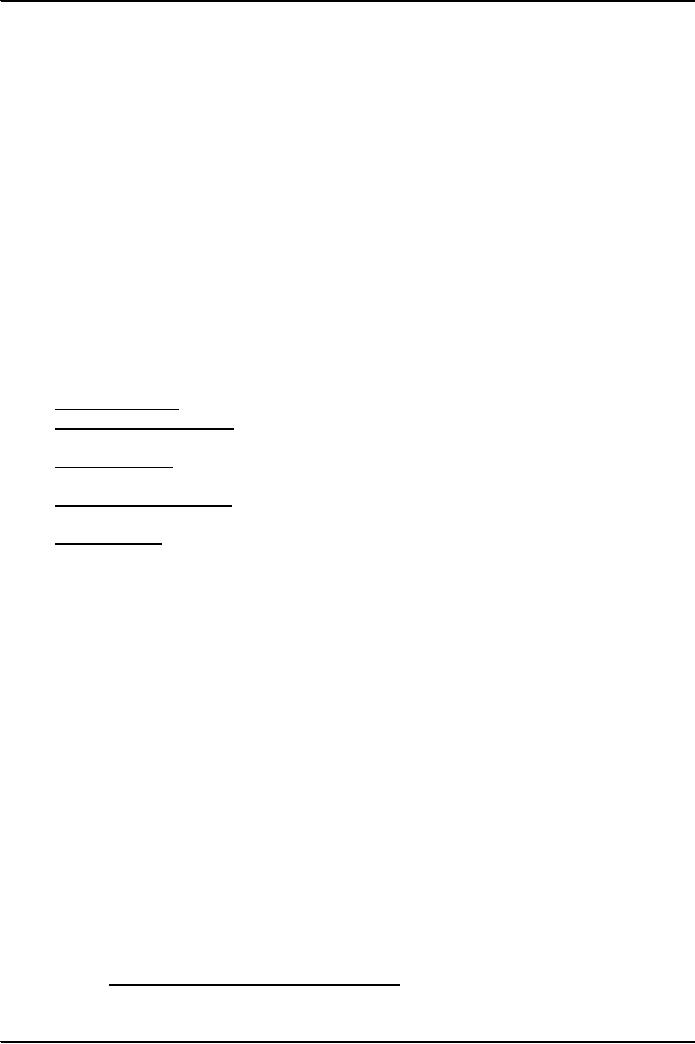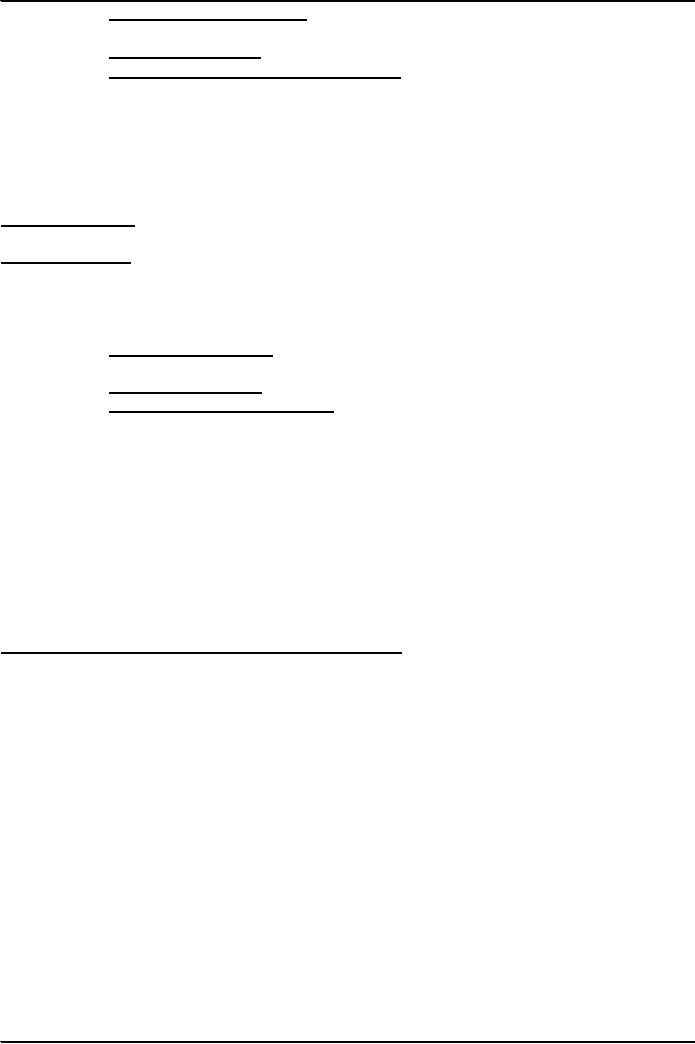 |
Definition & Components of Internal Control |
| << Measurement and Review of the Entity’s Financial Performance |
| Auditing ASSIGNMENT >> |

Fundamentals
of Auditing ACC 311
VU
Lesson
15
UNDERSTANDING
THE ENTITY AND ITS ENVIRONMENT
AND
ASSESSING THE RISKS OF MATERIAL
MISSTATEMENT
e)
Internal Control.
Understanding of
Internal Control is used by the
auditor
1.
to
identify types of potential
misstatements;
2.
to
consider factors that affect the
risks of material misstatements;
and
3.
to
design the nature, timing
and extent of further audit
procedures.
Definition
of Internal Control
Internal
control is the process designed
and affected by those
charged with governance,
management, and
other
personnel ...........
to
provide reasonable assurance about the
achievement of the entity's objectives
with regard to:
1.
Reliability
of financial reporting,
2.
Effectiveness
and efficiency of operations and
3.
Compliance
with applicable laws and
regulations.
It
follows that internal
control is designed and implemented to
address identified business
risks that
threaten the
achievement of any of these
objectives.
Components of
Internal Control
i)
The
control environment
ii)
The
entity's risk assessment process
iii)
The
information system, including the
related business processes relevant to
financial
reporting
and communication.
iv)
Control
activities
v)
Monitoring
of controls
i)
The Control
Environment
It
encompasses the following
elements:
(a)
Communication
and enforcement of integrity and
ethical values.
(b)
Commitment to
competence
(c)
Participation
by those charged with
governance
(d)
Management's
philosophy and operating
style
(e)
Organizational
structure
(f)
Human
resource policies and
practices
Auditor
should evaluate how these
components have been incorporated
into the entity's processes.
ii)
The
Entity's Risk Assessment
Process
It is the
process of identifying and responding to
business
risks that affect entity's
financial reporting.
Such
process includes how
management:
1. identifies
risks that affect entity's ability to
produce financial statement
that give true and
fair
view,
2.
estimates their
significance,
3.
estimates likelihood of their
occurrence and
4.
Decides upon actions to
manage them.
Risks
relevant to financial reporting include:
internal
events, and
external
events and
circumstance
That
may occur and adversely
affect an entity's ability to:
� initiate,
� record,
� process,
and
� report
the financial information.
Risks
can arise due
to circumstances such
as the following:
(internal/external)
52

Fundamentals
of Auditing ACC 311
VU
a)
Changes in operating environment
b) New
personnel
c) New
or revamped information
systems
d)
Rapid growth
e) New
technology
f)
New business models,
product or activities
g) Corporate
restructurings
h) Expanded
foreign operations
i)
New accounting
pronouncements
iii)
Information
system, including the related
business processes, relevant to
financial
reporting
and communication
The
information system consists
of:
1. infrastructure
(physical and hardware
components),
2.
software
3.
people
4.
procedures and
5.
data
Infrastructure
and software will be absent,
or have less significance, in
systems that are exclusively
or
primarily
manual. Many information
systems make extensive use
of IT.
Importance
of Information System
Accordingly,
an information system encompasses
methods and records
that:
� Identify
and record all valid
transaction.
� Describe
on a timely basis the transaction in
sufficient detail to permit proper
classification of
transactions
for financial reporting.
� Measure
the value of transactions in a manner
that permits recording their
proper monetary value
in the financial
statements.
� Determine the
time period in which transactions
occurred to permit recording of
transactions in
the
proper accounting
period.
� Present
properly the transactions and
related disclosures in the financial
statements.
Communication
� Communication
involves:
providing
an understanding of individual roles
and responsibilities pertaining to
internal
control,
understanding
roles of others and
doing
exception reporting to higher level
management.
� Communication
takes such forms as:
policy
manuals,
accounting
and financial reporting manuals
and memorandum.
� It
may also be made
electronically,
orally
and
through
the actions of management
iv)
Control
Activities
Control
activities include:
a)
Performance reviews
b)
Information processing
c)
Physical controls
d)
Segregations of duties
a)
Performance reviews
These
control activities include:
reviews
and analyses of actual
performance versus budgets,
forecasts, and prior
period
performance;
53

Fundamentals
of Auditing ACC 311
VU
relating
different sets of data - operating or
financial - to one another, together
with
analyses
of the relationships and investigative and corrective
actions;
comparing
internal data with external
sources of information;
and
review of
functional or activity performance,
such as a bank's Consumer loan
manager's
review of reports
by branch, region, and loan type
for loan approvals and
collections
b)
Information processing
A variety of
controls are performed to check
accuracy, completeness, and
authorization of
transactions.
The
two broad groupings of information
systems control activities
are:
i.
application
controls and
ii.
general
IT controls.
Application
controls apply to the processing of individual
applications. These controls help
ensure that
transactions
occurred, are authorized, and
are completely and accurately
recorded and
processed.
General
IT-controls commonly include controls over
data center and network
operations; system
software
acquisition,
change and maintenance;
access security; and
application system acquisition, development,
and
maintenance.
These controls apply to main-frame,
mini-frame and end-user
environments.
c)
Physical controls
These
activities encompass the:
physical
security of assets, including
adequate safeguards such as
secured facilities access to
i.
assets
and records;
authorization
for access to computer programs
and data files;
and
ii.
iii.
periodic
counting and comparison with
amounts shown on control
records (for example
comparing
the results of cash, security
and inventory counts with
accounting records).
d)
Segregation of duties
Assigning
different people the responsibilities of authorizing
transactions, recording transactions,
and
maintaining
custody of assets is intended to reduce
the opportunities to allow any
person to be in a position
to
both commit and conceal
errors or fraud in the normal course of
the person's duties. Examples
of
segregation
of duties include reporting, reviewing
and approving reconciliations, and
approval and control
of
documents.
v)
Monitoring
of Control
The
auditor should obtain an understanding of the major
types of activities that
i.
the
entity uses to monitor
internal control over financial
reporting, and
ii.
how
the entity initiates corrective actions
to its controls.
Monitoring
means and includes:
Ensuring
that internal controls are
operating as intended.
If
monitoring is not done, people may stop
performing the functions they are
required to
perform.
It
also involves assessing the
quality of internal control
performance over
times.
Monitoring
may be ongoing activities,
separate evaluations or a combination of
the two.
Monitoring
includes:
a)
Supervisions, functions of
managers
b)
Internal audit
c) Communication
from external parties indicating
areas requiring
3.
Assessing
the Risk of Material
Misstatement
The
auditor should identify and
assess the risks of material
misstatement at the financial statement
level, and
at the
assertion level for classes of
transactions, account balances,
and disclosures. For this
purpose, the
auditor:
� Identifies
risks throughout the process of
obtaining an understanding of the entity
and its
environment,
including relevant controls that relate
to the risks, and by considering
the
classes
of transactions, account balances,
and disclosures in the financial
statements.
� Relates
the identified risks to what can go
wrong at the assertion level;
� Considers
whether the risks are of a magnitude
that could result in a material
misstatement
of the financial
statements; and
54

Fundamentals
of Auditing ACC 311
VU
�
Considers
the likelihood that the risks could
result in a material misstatement of
the
financial
statements.
Significant
Risks that require Special Audit
Considerations
Significant
risks
These
relate to:
� non-routine
transactions (unusual)
� judgmental
matters (e.g. accounting
estimates)
� non-routine
transactions arising from
matters such as:
greater
management intervention to specify the
accounting treatment
greater
manual intervention for data
collection and
processing
complex
calculations or accounting
principles.
For
significant risks, to the extent the auditor
has not already done so, the
auditor should evaluate the
design
of the entity's related controls, including relevant
control activities, and
determine whether they have
been
implemented.
If
management has not appropriately
responded by implementing controls over significant
risks and if, as a
result,
the auditor judges that
there is a material weakness in the
entity's internal control, the
auditor
communicates
this matter to those charged
with governance as required in paragraph
8. In these
circumstances,
the auditor also considers the
implications for the auditor's risk
assessment.
Risks
for which substantive
procedures alone do not provide
sufficient appropriate audit
evidence
As
part of the risk assessment as described
in the above paragraph, the auditor
should evaluate the design
and
determine the implementation of the entity's controls,
including relevant control activities,
over those
risks
for which, in the auditor's judgment, it is not
possible or practicable to reduce the
risks of material
misstatement
at the assertion level to an acceptably
low level with audit
evidence obtained only
from
substantive
procedures.
Examples
of situations where the auditor
may find it impossible to
design effective substantive
procedures
that
by themselves provide sufficient
appropriate audit evidence that
certain assertions are not
materially
misstated
include the following:
� An
entity that conducts its
business using IT to initiate
orders for the purchase and
delivery of
goods
based on predetermined rules of what to order
and in what quantities and to pay the
related
accounts
payable based on system-generated
decisions initiated upon the
confirmed receipt of
goods
and terms of payment. No
other documentation of orders placed or
goods received is
produced or
maintained, other than through the IT
system.
� An
entity that provides services to
customers via electronic media (for
example, an Internet
service
provider
or a telecommunications company) and
uses IT to create log of the
services provided to
its
customers, initiate and
process its billings for the
services and automatically record
such
amounts
in electronic accounting records that
are part of the system used
to produce the entity's
financial
statements.
Revision
of Risk Assessment
While
performing tests of controls or
substantive procedures auditor
finds that controls are not
performing
effectively
and misstatements found are
not in accordance with
expectations of misstatements, the
auditor
should
revise his assessment of risk
and modify the further planned
audit procedures.
4.
Communicating
with those Charged with
Governance and Management
The
auditor should make those
charged with governance or
management aware, as soon as
practicable, and
at an appropriate
level of responsibility, of material weaknesses in the
design or implementation of
internal
control
which have come to the auditor's
attention.
5.
Documentation
The
auditor should document:
(a)
The
discussion among the engagement
team regarding the susceptibility of the entity's
financial
statements
to material misstatement due to
error or fraud, and the significant
decisions reached;
55

Fundamentals
of Auditing ACC 311
VU
(b)
Key
elements of the understanding obtained regarding
each of the aspects of the entity
and its
environment,
including each of the internal
control components, to assess the
risks of material
misstatement
of the financial statements; the sources
of information from which the
understanding
was
obtained; and the risk assessment
procedures;
(c)
The
identified and assessed
risks of material misstatement at the
financial statement level and at
the
assertion
level; and
(d)
The
risks identified and related
controls evaluated.
56
Table of Contents:
- AN INTRODUCTION
- AUDITORS’ REPORT
- Advantages and Disadvantages of Auditing
- OBJECTIVE AND GENERAL PRINCIPLES GOVERNING AN AUDIT OF FINANCIAL STATEMENTS
- What is Reasonable Assurance
- LEGAL CONSIDERATION REGARDING AUDITING
- Appointment, Duties, Rights and Liabilities of Auditor
- LIABILITIES OF AN AUDITOR
- BOOKS OF ACCOUNT & FINANCIAL STATEMENTS
- Contents of Balance Sheet
- ENTITY AND ITS ENVIRONMENT AND ASSESSING THE RISKS OF MATERIAL MISSTATEMENT
- Business Operations
- Risk Assessment Procedures & Sources of Information
- Measurement and Review of the Entity’s Financial Performance
- Definition & Components of Internal Control
- Auditing ASSIGNMENT
- Benefits of Internal Control to the entity
- Flow Charts and Internal Control Questionnaires
- Construction of an ICQ
- Audit evidence through Audit Procedures
- SUBSTANTIVE PROCEDURES
- Concept of Audit Evidence
- SUFFICIENT APPROPRIATE AUDIT EVIDENCE AND TESTING THE SALES SYSTEM
- Control Procedures over Sales and Debtors
- Control Procedures over Purchases and Payables
- TESTING THE PURCHASES SYSTEM
- TESTING THE PAYROLL SYSTEM
- TESTING THE CASH SYSTEM
- Controls over Banking of Receipts
- Control Procedures over Inventory
- TESTING THE NON-CURRENT ASSETS
- VERIFICATION APPROACH OF AUDIT
- VERIFICATION OF ASSETS
- LETTER OF REPRESENTATION VERIFICATION OF LIABILITIES
- VERIFICATION OF EQUITY
- VERIFICATION OF BANK BALANCES
- VERIFICATION OF STOCK-IN-TRADE AND STORE & SPARES
- AUDIT SAMPLING
- STATISTICAL SAMPLING
- CONSIDERING THE WORK OF INTERNAL AUDITING
- AUDIT PLANNING
- PLANNING AN AUDIT OF FINANCIAL STATEMENTS
- Audits of Small Entities
- AUDITOR’S REPORT ON A COMPLETE SET OF GENERAL PURPOSE FINANCIALSTATEMENTS
- MODIFIED AUDITOR’S REPORT